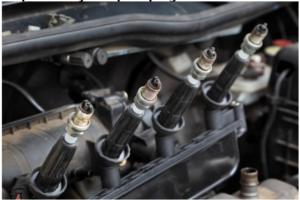When it comes to vehicle safety, the brake system is one of the most critical components. A well-functioning brake system is essential to ensure your safety on the road, as well as the safety of your passengers and other road users. In this post, we’ll delve into the basics of the brake system, its components, and provide tips on maintenance to keep your brakes in top condition.
Brake System Components:
- Brake Pedal: The brake pedal is the component that you press to activate the brake system. It’s connected to the master cylinder via a pushrod.
- Master Cylinder: The master cylinder is responsible for converting the pressure from the brake pedal into hydraulic pressure. It’s filled with brake fluid, which transmits the pressure to the brake calipers.
- Brake Fluid: Brake fluid is a hydraulic fluid that transfers pressure from the master cylinder to the brake calipers. It’s essential to check and maintain the brake fluid level regularly.
- Brake Calipers: Brake calipers are the components that house the brake pads. They’re responsible for clamping the brake pads onto the rotor to slow down or stop the vehicle.
- Brake Pads: Brake pads are the friction material that comes into contact with the rotor to slow down or stop the vehicle. They’re designed to wear down over time and need to be replaced regularly.
- Rotors: Rotors are the metal discs that the brake pads clamp onto to slow down or stop the vehicle. They can become warped or worn out over time, requiring replacement.
- Brake Lines: Brake lines are the tubes that carry brake fluid from the master cylinder to the brake calipers.
Brake System Maintenance:
- Brake Pad Replacement: Brake pads should be replaced every 30,000 to 50,000 miles, depending on your vehicle’s manufacturer recommendations and driving conditions.
- Brake Fluid Check: Check the brake fluid level every 12,000 miles and top it off as needed. It’s also recommended to flush and replace the brake fluid every 30,000 miles.
- Rotor Inspection: Inspect the rotors every 12,000 miles for signs of wear, such as scoring or warping. Replace them if necessary.
- Brake Line Inspection: Inspect the brake lines every 12,000 miles for signs of damage, corrosion, or leaks. Replace them if necessary.
- Brake System Bleeding: Bleed the brake system every 30,000 miles to remove air and moisture that can accumulate in the system.
Common Brake System Issues:
- Spongy Brake Pedal: A spongy brake pedal can indicate air in the brake system or worn-out brake pads.
- Screeching or Grinding Noises: Screeching or grinding noises when applying the brakes can indicate worn-out brake pads or warped rotors.
- Vibrations When Braking: Vibrations when braking can indicate warped rotors or uneven brake pad wear.
By understanding the components of the brake system and performing regular maintenance, you can ensure your safety on the road and prevent costly repairs down the line. Remember to always refer to your vehicle’s manufacturer recommendations for specific maintenance schedules and guidelines.




